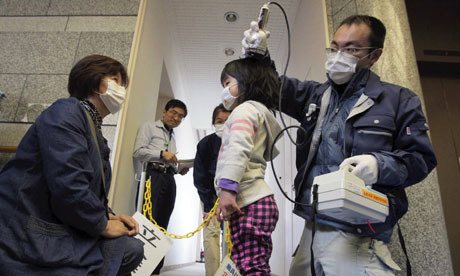Dr. Busby would have exposed the complete ignorance of George Monbiot, like Dr. Helen Caldicott did before.
Introducing ‘The Great Moonbat’:
– “Prescription for Survival”: A Debate on the Future of Nuclear Energy Between Anti-Coal Advocate George Monbiot and Anti-Nuclear Activist Dr. Helen Caldicott (Democracy Now):
Guests:
George Monbiot, British journalist and author. He is a columnist with the The Guardian (U.K.) and most recently wrote the article “Why Fukushima Made Me Stop Worrying and Love Nuclear Power.”
Helen Caldicott, world-renowned anti-nuclear advocate, author and pediatrician. She has spent decades warning of the medical hazards posed by nuclear technologies. She is the co-founder of Physicians for Social Responsibility.
One might ask, how f****** stupid can ‘bought and paid for’ George Monbiot get?
(Rhetoric question.)
Rumors say he is in direct contact with the all-wise knowing stupidity.
Mr. Monbiot, why don’t you just move to Fukushima for good and ‘LOVE’ nuclear power?
This is an excerpt from the interview:
Dr. Helen Caldicott (Co-founder of Physicians for Social Responsibility):
“Up to a million people have already died from Chernobyl, and people will continue to die from cancer for virtually the rest of time. What we should know is that a millionth of a gram of plutonium, or less, can induce cancer, or will induce cancer. Each reactor has 250 kilos, or 500 pounds, of plutonium in it. You know, there’s enough plutonium in these reactors to kill everyone on earth.
…..
You don’t understand internal emitters. I was commissioned to write an article for the New England Journal of Medicine about the dangers of nuclear power. I spent a year researching it. You’ve bought the propaganda from the nuclear industry. They say it’s low-level radiation. That’s absolute rubbish. If you inhale a millionth of a gram of plutonium, the surrounding cells receive a very, very high dose. Most die within that area, because it’s an alpha emitter. The cells on the periphery remain viable. They mutate, and the regulatory genes are damaged. Years later, that person develops cancer. Now, that’s true for radioactive iodine, that goes to the thyroid; cesium-137, that goes to the brain and muscles; strontium-90 goes to bone, causing bone cancer and leukemia. It’s imperative … that you understand internal emitters and radiation, and it’s not low level to the cells that are exposed. Radiobiology is imperative to understand these days.”
See also:
– Dr. Helen Caldicott: How Nuclear Apologists Mislead The World Over Radiation
Prof. Dr. Chris Busby (George Monbiot, Aka ‘The Great Moonbat’, Understandably Refused To Come) On Long Term Radiation Effects (Video – Oxford Town Hall)
YouTube Added: 22.11.2011
YouTube Added: 22.11.2011
Dr Busby and George Monbiot were invited to debate the arguments about the health effects of radiation at Oxford Town Hall on Nov 3rd 2011. Monbiot refused to come as he was frightened that he would be shown to be ignorant. Therefore Busby came alone and gave this talk aimed at George Monbiot to give him the evidence. Instead of debating the issue Monbiot chose to attack Busby in the Guardian on 21st November.
see www.euradcom.org
www.llrc.org
More info:
